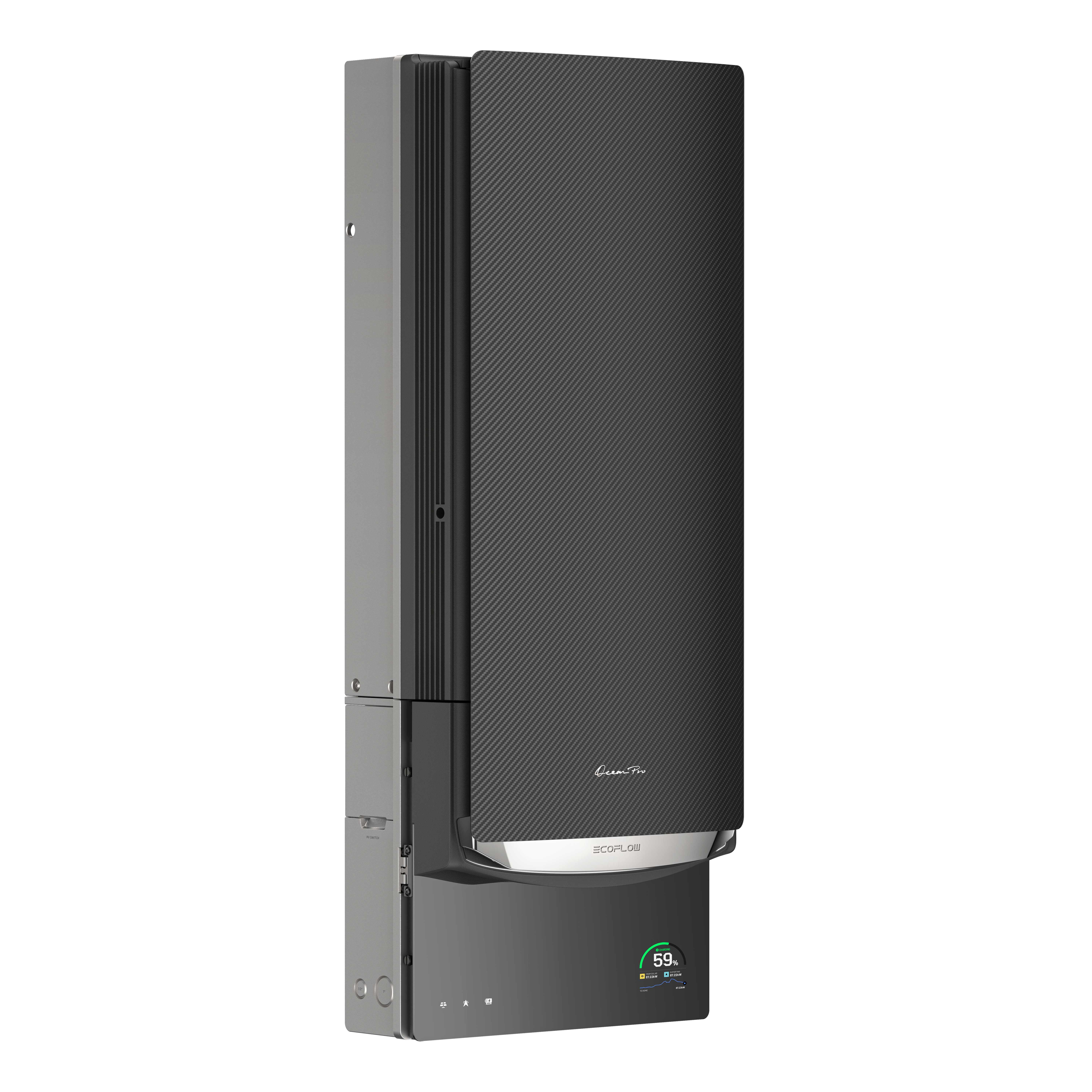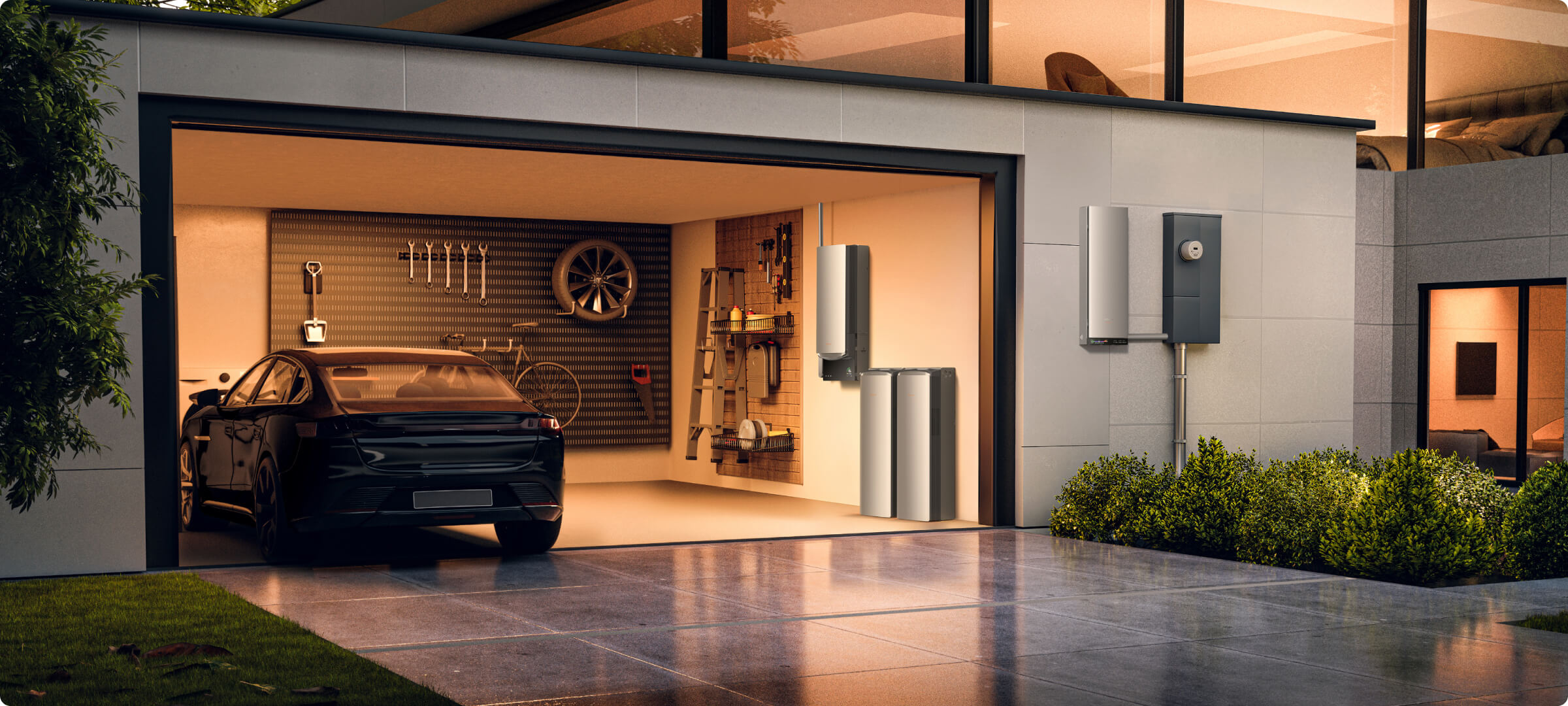- The Hidden Problem: How Very Hot Weather Quietly Hurts Your Battery
- Not All Batteries Are Made the Same: Why Chemistry Is Your First Protection
- The Desert-Proof List: 5 Features of a Really Strong Solar Battery System
- Engineered for Extremes: The EcoFlow OCEAN Pro Solution
- Powering Your Desert Home with Confidence
Can a Home Battery Survive Desert Heat?
- The Hidden Problem: How Very Hot Weather Quietly Hurts Your Battery
- Not All Batteries Are Made the Same: Why Chemistry Is Your First Protection
- The Desert-Proof List: 5 Features of a Really Strong Solar Battery System
- Engineered for Extremes: The EcoFlow OCEAN Pro Solution
- Powering Your Desert Home with Confidence
Living in a sunny place like the American Southwest gives you a big advantage for solar energy. All that sunshine is a powerful, free way to power your home and get energy independence. But there's a problem: the same hot weather that makes solar panels work so well can be the biggest enemy of your system's main part—the solar battery bank. This article will explain how heat affects your battery, show you the risks, and give you a clear guide to choosing a solar battery systems for hot climates that doesn't just survive the deser, but also does well in it.
The Hidden Problem: How Very Hot Weather Quietly Hurts Your Battery
To understand why heat is a problem, think of a battery as a careful chemical machine. Its job is to store and give back energy through chemical reactions. Heat acts like a booster, making those reactions go faster. This might sound good, but it costs your battery's health and life in a way you can't fix.
Here's how very hot weather quietly damages a home battery system:
Faster Aging and "Life Debt"
The best working temperature for most lithium-ion batteries is between 68°F and 77°F (20°C to 25°C). Every day a battery works above this range, it builds up what you could call "life debt." Studies show that running a battery at 113°F (45°C) can cause more than twice the damage compared to keeping it at 77°F (25°C). This early aging is permanent and means your battery will need to be replaced years earlier than expected. That's why home battery system is essential to prevent this damage and extend your battery's lifespan.
Capacity Loss
This is the slow loss of the battery's ability to hold a full charge. Long exposure to high temperatures breaks down the battery's inside parts, like the liquid and metal pieces. As these parts break down, the total amount of energy your battery can store gets smaller, leaving you with less power when you need it most.
Lower Round-Trip Efficiency
As a battery heats up, its inside resistance goes up. This means more of your valuable solar energy is lost as heat during both the charging and emptying cycles. A battery with lower efficiency means less of the clean energy made by your panels actually gets to your home's appliances, costing you money over time.
The Biggest Safety Risk: Heat Runaway
This is rare in well-made systems, but heat runaway is the most serious risk associated with overheated batteries. It's a dangerous chain reaction where the inside temperature rises out of control, which can lead to system failure, fire, or even an explosion. The risk of heat runaway is much higher with very hot outside temperatures, making it a serious safety issue for desert heat and battery storage.
This "life debt" isn't just a technical problem; it's a money problem. A cheaper battery not made for heat might seem like a good deal at first, but its faster breakdown means you'll be paying for a replacement much sooner. Buying a heat-resistant battery isn't extra—it's a smart choice to make sure you have a longer-lasting item and a lower total cost.
Not All Batteries Are Made the Same: Why Chemistry Is Your First Protection
When it comes to heat tolerance, the most important thing is the battery's basic chemistry. In the world of home energy storage, two types of lithium-ion batteries control the market: LFP (Lithium Iron Phosphate) and NMC (Nickel Manganese Cobalt). For hot weather, one is clearly better.
LFP: The Clear Choice for Hot Weather
LFP batteries use iron phosphate as their main material, a chemical structure that is naturally more stable and strong, especially under heat stress. This stability gives several key advantages in a desert environment:
- Better Heat Stability: LFP chemistry can handle much higher temperatures before becoming unstable. The heat runaway trigger point for an LFP cell is around 446°F (230°C), much higher than the 320°F (160°C) for an NMC cell. This gives a much wider safety margin in hot garages or outdoor setups.
- Better Safety: If there is a failure, LFP chemistry does not release oxygen—a key part needed for a fire. This makes LFP batteries much less likely to catch fire and a much safer choice for home use.
- Longer Cycle Life: The strong chemical structure of LFP batteries lets them handle thousands more charge and discharge cycles than NMC batteries, especially in warmer conditions. This means directly to a longer, more reliable service life.
Of all the different types of solar batteries, NMC batteries do offer higher energy density (meaning more power in a smaller space), but this comes with lower heat stability and a higher safety risk, making them less good for home storage in very hot weather.


LFP vs. NMC for Hot Weather
| Feature | LFP (Lithium Iron Phosphate) | NMC (Nickel Manganese Cobalt) |
| Heat Tolerance | Excellent. More stable at high temperatures. | Good, but more likely to break down. |
| Safety (Heat Runaway) | Much higher trigger point (~446°F / 230°C). Naturally safer chemistry. | Lower trigger point (~320°F / 160°C). Higher risk. |
| Lifespan (Cycle Life) | Very long (3,000-6,000+ cycles). | Shorter (800-2,000 cycles). |
| Main Advantage | Safety, Long Life, and Stability. | Higher Energy Density (more power in less space). |
| Best For | Whole-home backup, especially in hot weather. | Uses where space and weight are important (like some EVs). |
The Desert-Proof List: 5 Features of a Really Strong Solar Battery System
Now that you understand how important chemistry is, here is a practical list of what to look for when choosing heat-resistant home batteries. A really "desert-proof" system isn't just about one feature; it's about a complete design where the chemistry, cooling, and case all work together to protect your investment.
Advanced Heat Management System (TMS)
A TMS is the battery's special cooling system, and it's vital for protecting its life and making sure it's safe. There are two main types:
- Passive Cooling: Uses heat sinks and natural air flow. This is often enough for mild weather.
- Active Cooling: Uses fans or liquid to actively move heat away from the battery cells. For the constant, strong heat of a desert, an active TMS is needed for keeping the battery in its best temperature range.
High Maximum Working Temperature
Check the maker's spec sheet for the maximum working temperature. A battery put in a garage or on a sun-facing wall can easily get much hotter than the outside air temperature. Look for a system rated to work safely up to at least 130°F (55°C), with higher ratings showing more strong engineering.
A Dust-Tight and Water-Resistant Case (IP Rating)
The IP (Protection) rating tells you how well the battery's case protects its sensitive electronics from outside elements. For a desert environment, an IP67 rating is the best standard.
The first number, '6', is a must-have. It means the case is completely dust-tight, stopping fine sand and dust from blocking cooling fans and causing electrical problems.
The second number, '7', means the unit is protected from powerful water streams and even temporary underwater exposure up to one meter of water. Deserts are dry, but this protects your system during sudden heavy rains or flash floods.
Certified Safety and Reliability
Safety certifications are your proof that a system has passed tough, independent testing. They are not just labels; they are a promise recognized by installers, inspectors, and insurance companies. Look for these key US standards:
- UL 9540: The benchmark for the entire energy storage system's safety.
- UL 1973: Certifies the safety of the battery modules themselves.
- UL 9540A: An important test that checks how well the system contains a heat runaway event, proving its fire safety design.
A Long-Term, Complete Warranty
A maker's warranty is a direct statement of confidence in their product's strength. For a major home investment like a battery bank, a 10-year warranty should be the lowest acceptable. A 15-year warranty is a sign of a very well-engineered product made to handle harsh conditions for the long term.
Engineered for Extremes: The EcoFlow OCEAN Pro Solution
Finding a system that checks all these boxes might seem hard, but modern engineering is up to the task. The EcoFlow OCEAN Pro is a perfect example of a whole-home battery backup system made specifically for the challenges of extreme environments.
It was engineered from the ground up to meet the demands of a desert climate:
- Built for Harsh Environments: It handles working temperatures up to 140°F (60°C), well above the level needed for desert summers.
- Desert-Proof Case: Its IP67 rating makes sure it is completely sealed against dust and sand and can handle flooding up to 3.3 feet.
- TriShield Protection System: This goes beyond standard certifications with a built-in fire suppression module and an explosion-proof valve to give the highest level of safety against heat events.
- Strength & Long-Term Confidence: Built with stable LFP battery chemistry, the OCEAN Pro is backed by a 15-year warranty, guaranteeing long-term performance and peace of mind.


Beyond its strength, the OCEAN Pro delivers the power needed for true energy independence, with expandable storage up to 80kWh, a massive 24kW continuous output to run heavy appliances like air conditioners, and a 40kW solar input to capture more free energy from the abundant desert sun.
Powering Your Desert Home with Confidence
So, can a home battery survive desert heat? The answer is a strong yes—if it's the right battery. The strong sun that defines desert living is an incredible asset, but using it safely and effectively needs a system engineered for the environment.
By choosing a solar battery bank with stable LFP chemistry, an active heat management system, a high IP rating, top-level safety certifications, and a long-term warranty, you can turn the challenge of desert heat into your greatest advantage. You can power your home with confidence, knowing your investment is protected and your family is secure for years to come.
Get your desert-proof EcoFlow OCEAN Pro system today and power your home with confidence.